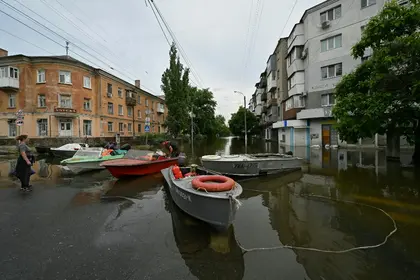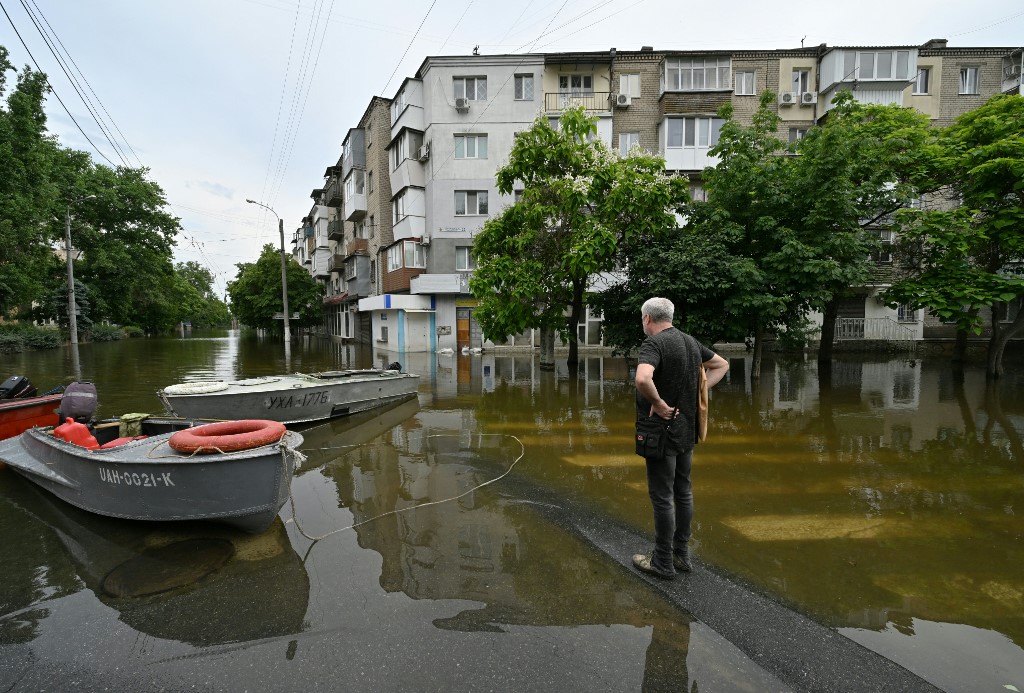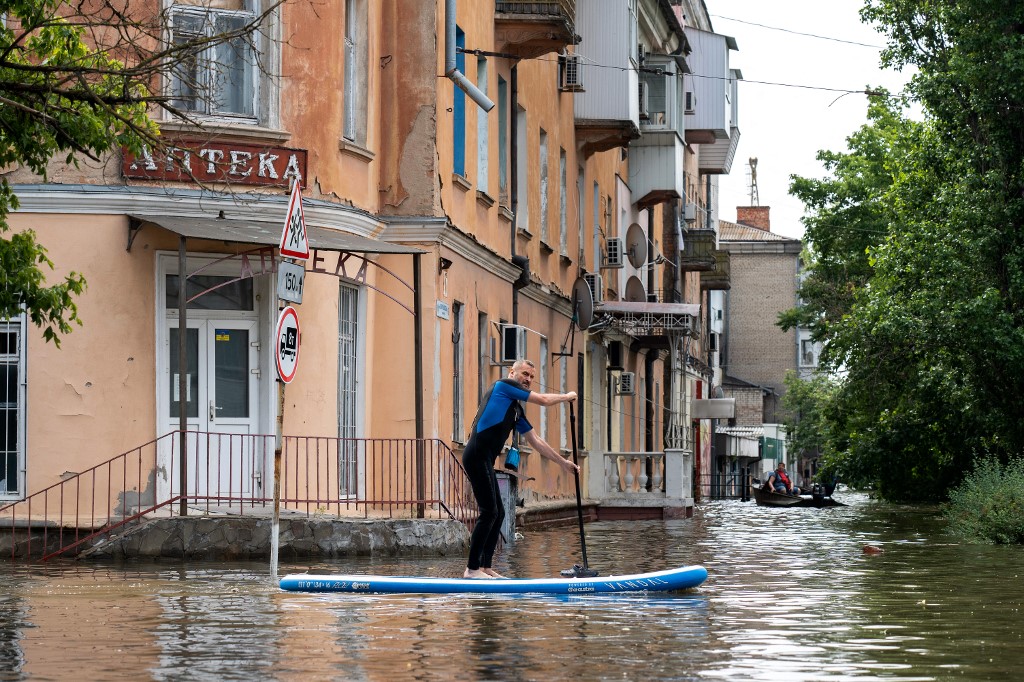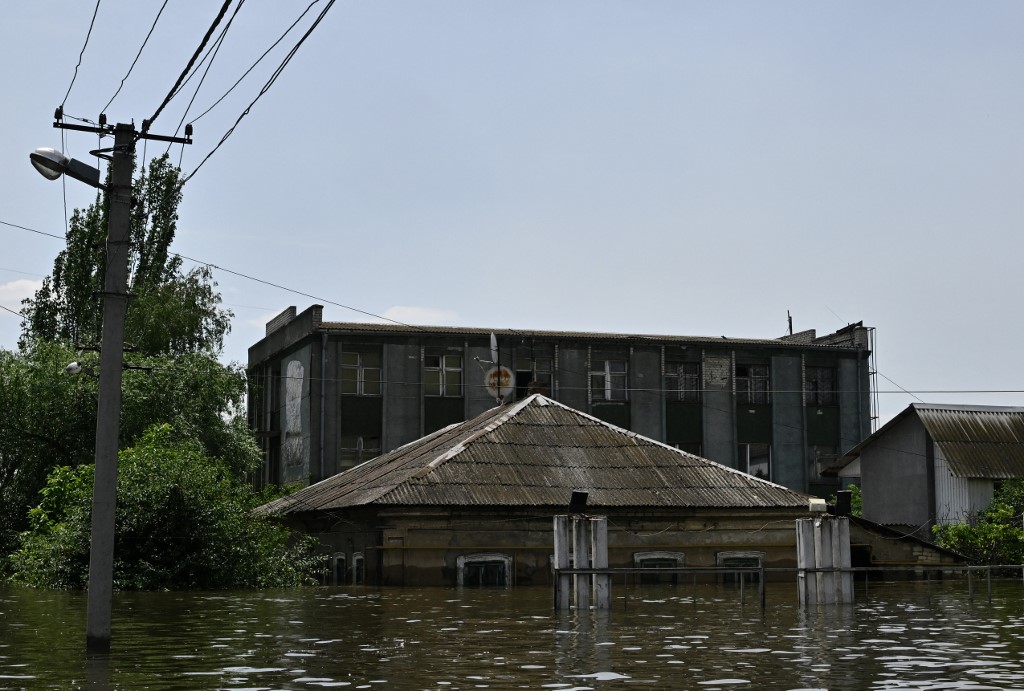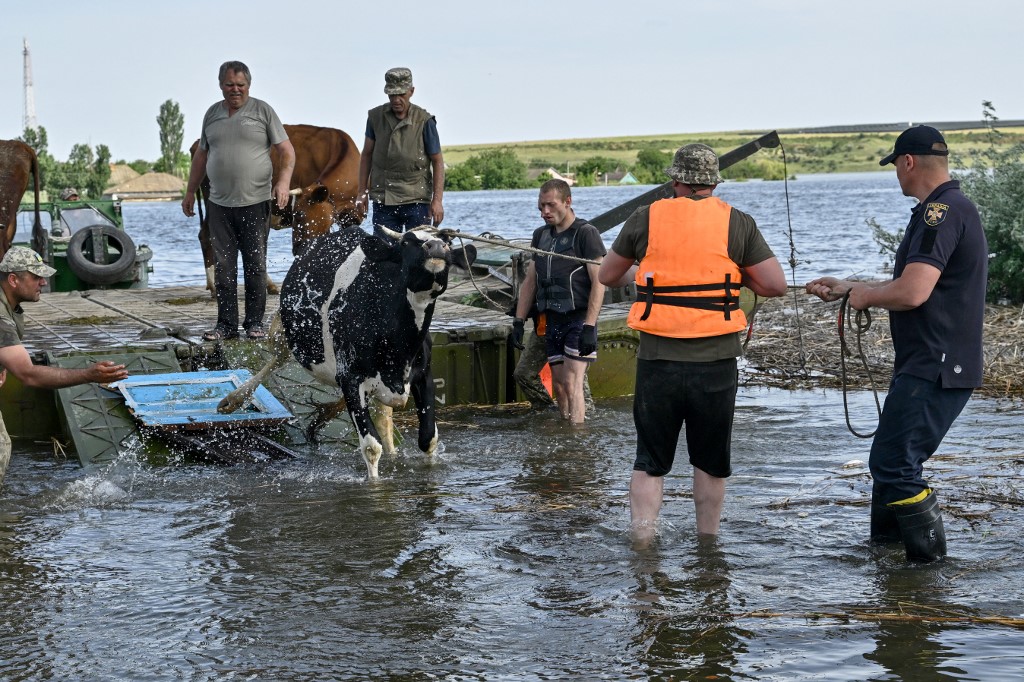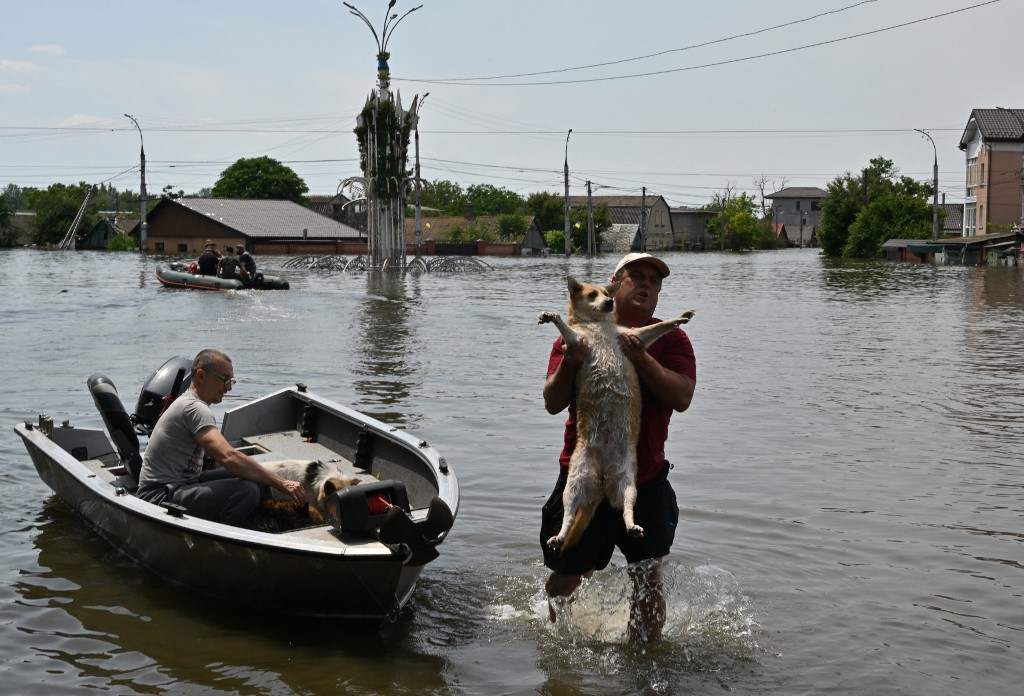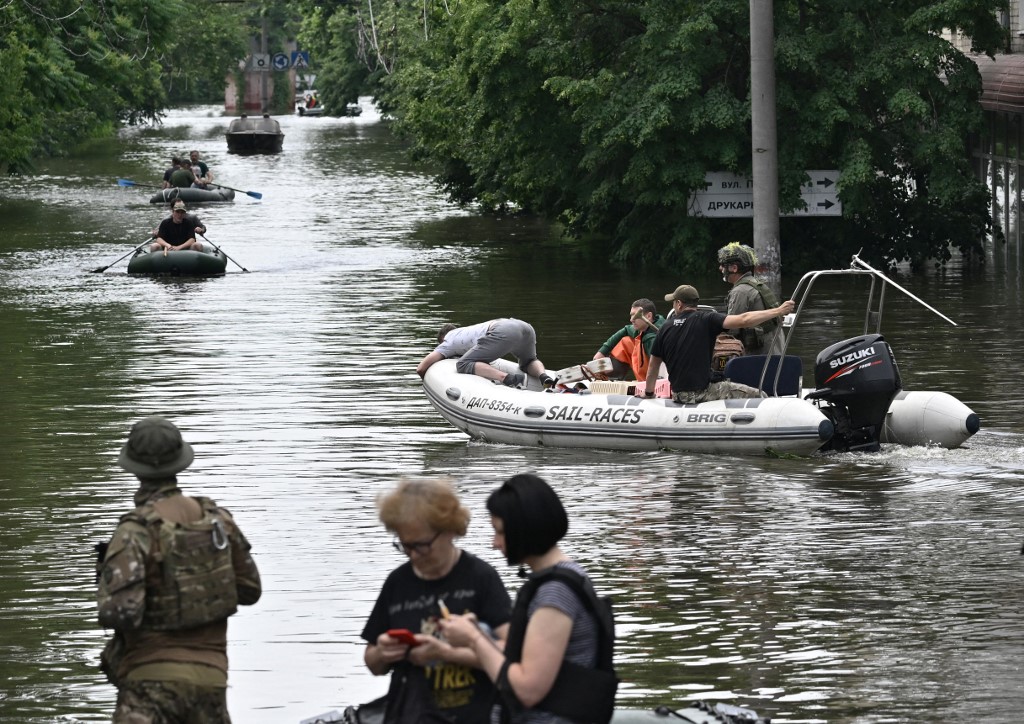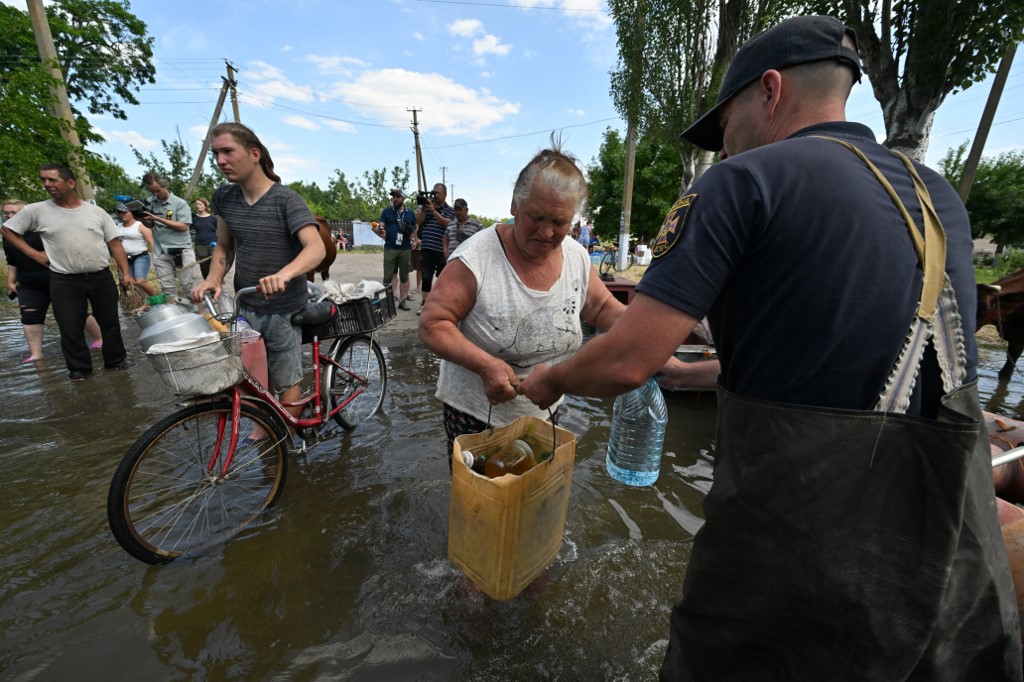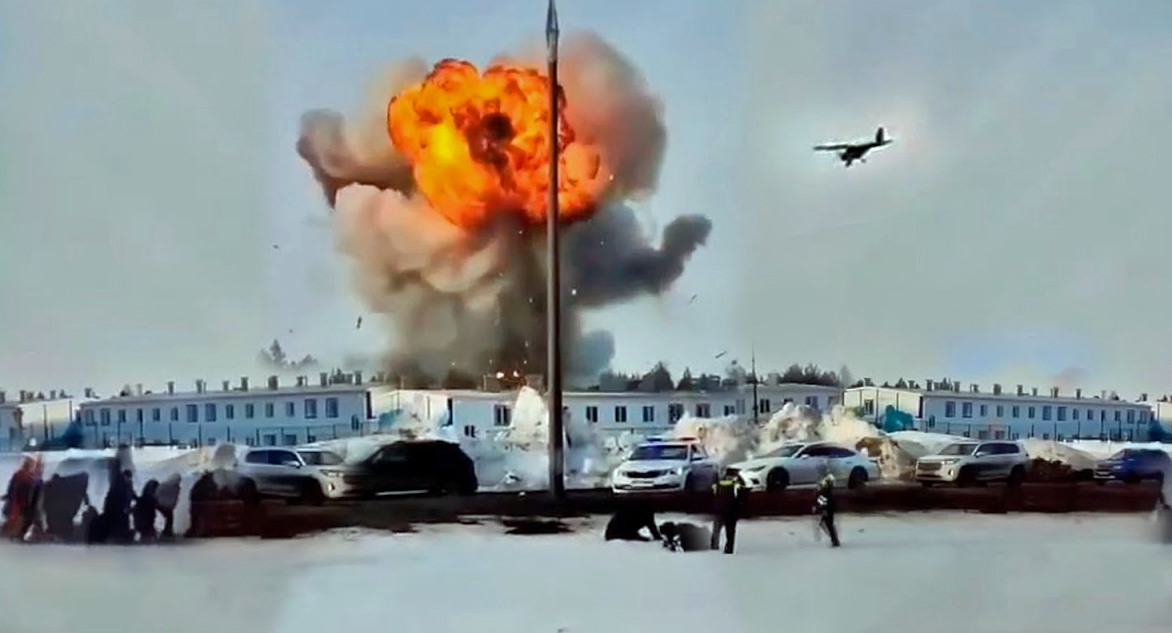Five days after the destruction of the Kakhovka Dam in Ukraine’s Kherson region, the scale of the disaster is still difficult to comprehend – thousands forced to flee, disrupted water supplies and an unfolding environmental and humanitarian catastrophe.
The latest on the ground
JOIN US ON TELEGRAM
Follow our coverage of the war on the @Kyivpost_official.
According to authorities, the flood waters are now beginning to recede. Oleksandr Prokudin, the head of the Kherson Regional Military Administration, said water levels had decreased on average by 27cm overnight.
- Find the newest Ukraine news pieces that came out today.
- Access the newest Ukraine news items published today.
"Compared to the morning [of June 10], the average level of flooding has decreased by 27 cm and is now 4.45 m. The area of the flooded territories has decreased by almost half.
“The water has receded from Mykolaivka, Lvove and Olhivka of Beryslav district. 32 settlements on the right bank are still flooded. 3,784 residential buildings are under flood water,” he said.
As of Saturday evening, 2,699 people, including 178 children and 67 people with reduced mobility, were evacuated from dangerous settlements in Ukrainian-held territories.
Prokudin's counterpart in the Mykolaiv region, Vitaly Kim, also said "the water level began to fall" there.
Ukraine has said five people are known to have died while Russian-installed authorities in occupied areas affected by the flooding have said eight people have died in areas they currently control.
The death toll is likely to rise with Ukrainian authorities saying on Saturday that 29 people were missing.

Special Ops Recruiters Provided a Unique Christmas Greeting to Ukraine
The evidence against Russia
While Ukraine has not hesitated in blaming Russia for deliberately blowing up the dam, the international community has held back from making any concrete accusations so far, but according to the growing body of evidence, this may not be too far off.
Norway's seismological institute said on Friday it had detected “an explosion” at the site and time the dam was breached, heavily suggesting it did not burst as a result of damage incurred during months of heavy bombing.
"We are confident that there was an explosion," Ben Dando, a senior Norsar official, told AFP.
According to the institute, the blast occurred at 2:54 am local time, at a site whose coordinates correspond to the Kakhovka dam.
The magnitude of the blast was “between 1 and 2”, said Norsar, which had yet to calculate its equivalent in tonnes of TNT.
“It's not a weak explosion,” Dando added.
Any terrorist counts on only a few forms of results for himself: the suffering of people, the intimidation of people, and the ruins that terror leaves behind. This is exactly how Russia acts in this case.
— Volodymyr Zelenskyy / Володимир Зеленський (@ZelenskyyUa) June 11, 2023
We will do everything to guarantee people a basis for life even after this… pic.twitter.com/iIKLQRGlSm
In a separate announcement later on Friday afternoon, The New York Times reported that a U.S. official said American spy satellites equipped with infrared sensors also detected an explosion.
Also on Friday, Ukraine’s security services released a recording of an intercepted phone call between two Russian men in which one of them appears to admit that Moscow’s forces blew up the dam in a botched operation.
During the call, one of the men says: “[Ukraine] didn’t blow it up. Our sabotage team is there. They wanted to cause fear with this dam. It did not go according to the plan.”
EU foreign policy chief Josep Borrel has come closest to a direct accusation so far, saying on Friday “everything indicates” Russia is behind the Kakhovka dam breach.
“The dam was not bombed. It was destroyed by explosives installed in the areas where the turbines are located. This area is under Russian control,” Borrell told Spanish public television.
“I wasn’t there to find out who did it. But everything seems to indicate that if it took place in an area under Russian control, it is difficult to believe it could have been someone else,” he added.
“In any case, the consequences for Ukraine are terrible, from the humanitarian point of view for the displaced people, and from the environmental point of view because the (dam’s) destruction will cause an ecological disaster.”
The Geneva Conventions prohibit attacks on dams unless "it is used for other than its normal function and in regular, significant and direct support of military operations and if such attack is the only feasible way to terminate such support," an exemption that did not apply to the Nova Kakhovk dam.
The humanitarian situation
According to the UN, 700,000 people do not have proper access to drinking water on both the Ukrainian-controlled and Russian-controlled sides of the river.
The UN sent humanitarian convoys to the region on Friday, but the scale of the clean-up task and the range of consequences is on a massive scale.
Undersecretary-General for Humanitarian Affairs, Martin Griffiths, told AP that one of the immediate threats is that posed by the flood waters digging up and moving land mines “and what we are bound to be seeing are those mines floating in places where people don’t expect them,” threatening adults and especially children.
“So it’s a cascade of problems, starting with allowing people to survive today, and then giving them some kind of prospects for tomorrow,” he said.
The ecological situation
The full ecological impact of the destruction of the dam won’t be known for some time, but there is no doubt it will be immense.
Ukraine has already warned of a potential "ecocide" after 150 tonnes of engine oil spilled into the river, from the dam’s machinery, as a result of the attack.
One very visible consequence of the disaster is the current situation at the Kakhovka reservoir in place, which can hold 18 cubic kilometers of water – approximately the same capacity as Utah's Great Salt Lake.
Before-and-after video posted on social media shows how just how far the water levels have dropped in the reservoir.
Ukrainian ecologist, Maksym Soroka, said: “The water will not disappear. However, now this place will become a temporary swamp. And only then will nature figure out what to do with this territory.”
Griffiths warned the ravages of flooding will almost inevitably lead to lower grain exports, higher food prices around the world, and less to eat for millions in need.
You can also highlight the text and press Ctrl + Enter


